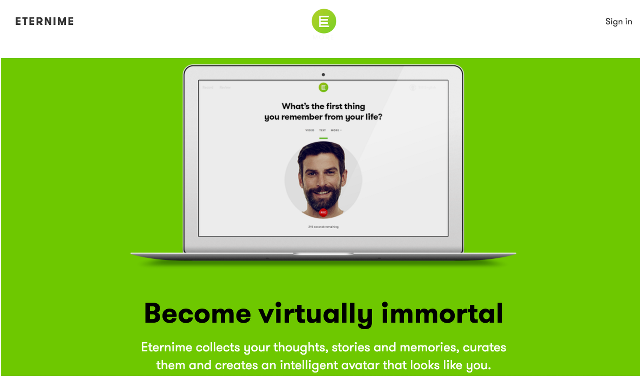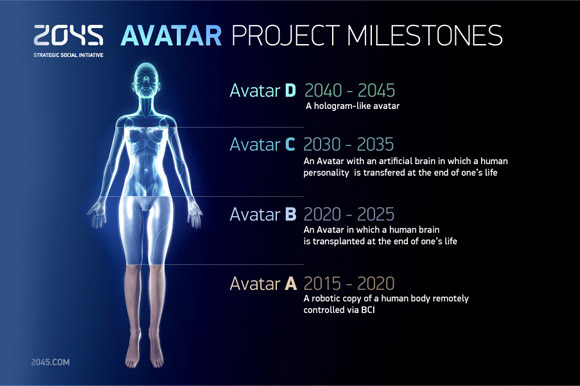I recently watched the episode of Black Mirror, “San Junipero,” where a woman in a vegetative state chooses to upload her consciousness into a computer where she will live forever; young and in paradise. The woman she falls in love with in the simulated resort town of San Junipero is facing death in the real world, but has decided to choose death instead of living forever as algorithms and code.
Blissful algorithms and code, but algorithms and code nonetheless.
I won’t tell you how the episode ends, the ending isn’t important (though it really is a lovely episode of Black Mirror and you really should watch it). That episode made me think about immortality, and more than that, how we define life in this technological age.
Is it enough to live with the illusion of humanity, either our own or our loved ones? Or is it foolish, downright disrespectful, to reduce a life to one’s quantifiable idiosyncrasies and mannerisms?
It seems that in 2016 we were more obsessed than ever with cheating death. Perhaps it’s in reaction to the seemingly relentless loss of life this year, but people really started to throw themselves into the idea of life in spite of death.
As technology advances and the reality of Artificial Intelligence, reanimation, and yes, raising the dead, become a potential reality (has it already?), we will have to confront questions of ethics, morality, and more than anything, “Should we?”
Once purely the stuff of science fiction, restoring life seems to be creeping closer and closer towards our outstretched hands.
Are we ready for such responsibility within our lifetime?
Take a look at some of the ways we are raged against the dying of the light in 2016. Could you see your, or a loved one’s life being extended by artificial means? Would it be an abomination or a comfort?
In whatever form it takes, would you want to live forever?
More Than Words

Eugenia Kuyda missed her friend.
Roman Mazurenko, Kuyda’s brilliant, eccentric, arguably visionary friend, had been killed by a speeding car and just like that was lost to oblivion. Or was he?
With the engineering talents of Kuyda’s artificial intelligence startup, Luka (founded in Moscow, now in San Francisco), Kuyda created a neural network filled with over 8,000 lines of text that Mazurenko had sent to friends and family over the years.
The result? The ability to communicate with Mazurenko again. Well, a bot created to emulate Mazurenko.
The Roman bot came to “life” on May 24th – “anyone who downloaded the Luka app could talk to it — in Russian or in English — by adding @Roman.” With the Replika app that Luka hopes to release soon, Kuyda intends to “mimic living people” with the hopes that one day those living people will be kept “alive” digitally, like Mazurenko.
Kuyda has admitted that the Roman bot’s responses are still a “shadow of a person”, but it is improving and so is the the technology. In fact, according to Kuyda, “The question wasn’t about the technical possibility. It was: how is it going to feel emotionally?”
And indeed the Roman bot has stirred up some mixed emotions. Some friends told Kuyda that they were “disturbed by the project and refused to interact with it.” Vasily Esmanov, a former coworker of Mazurenko’s said on Facebook, “This is all very bad. Unfortunately you rushed and everything came out half-baked. The execution – it’s some type of joke…Roman needs [a memorial], but not this kind.”
However, the response to the Roman bot was mostly positive. Many people said they gained comfort and peace from interacting with the bot. Friends even called it “uncanny” the way the bot could mimic Mazurenko’s unique speech patterns and humor.
Said Mazurenko’s mother to The Verge, ““There was a lot I didn’t know about my child. But now that I can read about what he thought about different subjects, I’m getting to know him more. This gives the illusion that he’s here now.”
It seems that “virtual immortality” is a growing industry. Startups ETER9 and Eterni.me are both apps that will allow living users to create avatars of themselves, compiling information during their lives in order to exist as a bot after death. While both are still in testing phases, the goal is to make it possible for the living to interact with the dead as easily as they might send a chat request or post on Facebook.
“I am an Android”

What if you could sit in on a lecture from Shakespeare himself? Swap stories with Twain? Pick Charlotte Brontë’s brain?
Now at Nishogakusha University in Tokyo, studying with a long-dead master is not impossible. Sort of.
To celebrate the centennial of Japanese literary icon Natsume Soseki’s death (his face once adorned the 1,000 Yen note), an android in his image has been created in collaboration with engineer Ishiguro Hiroshi at Osaka University.
With a face designed using Natsume’s death mask and photographs from Asahi Shimbun, the newspaper he once worked for, the “Soseki Android” will speak, recite works, and lecture in a voice derived form Natsume’s grandson, the manga critic, Natsume Fusanosuke.
Intense research has gone into creating as accurate and lifelike a representation of Natsume, and though the android could not walk at its (his?) unveiling, Soseki Android should be fully functional in the near future.
Author of such Japanese well-known classics as Kokoro and I am a Cat, educators hope that Soseki Android will rekindle a love of reading, writing, and literature in middle, high school, and college students.
Soseki Android is slated to give a lecture at Nishogakusha University in October of 2017, commemorating the university’s 140th year.
ReAnima-tor
In April, biotech companies Bioquark and Revita Life Sciences, in collaboration with Dr. Himanshu Bansal of Anupam Hospital in Uttarakhand, India, announced that they had been granted permission by “an Institutional Review Board in the U.S. and India to use 20 brain-dead patients” in a study on stem cells and the regeneration of neurons.
They call it the ReAnima project. And yes, it is exactly as it sounds.
Bansal and his team hope, through a cocktail of peptides and stem cells injected into brain-dead individuals over the course of several weeks, that it could prove possible to “prompt the ‘dead’ brain to regrow functional neurons that could help restore brain function.”
Could this mean that the dead might rise sooner than we think? “We think it’s entirely feasible,” Ira Pastor, CEO of Bioquark said.
However, not everyone was so enthusiastic about the ReAnima project.
Blocked by the Indian Council of Medical Research (ICMR) in November, the ICMR had ethical concerns over the use of deceased humans before testing had ever occurred in “animal models”. The Council also expressed concerns over the trauma that the families of the dead/formerly dead might experience should the project be successful in any way. Along with some “regulatory lapses” regarding permissions from the Drug Controller General of India, the ReAnima project is currently spinning its wheels.
And while at this time it’s unclear how or if the study is moving forward, Pastor is confident that their work will continue and that regeneration of neurons and the eventual revitalization of the dead are most certainly in our future.
Immortalized on Film

Maybe we can’t actually raise the dead (yet), but we can make them perform.
Star Wars fans were treated to a familiar face in Rogue One, that of Grand Moff Tarkin, originally portrayed by actor Peter Cushing. As Rogue One is a prequel, Tarkin has not yet met his explosive demise. And while playing with timelines and mortality are all fair game in science fiction, Hollywood is usually subject to the current rules of universal and cosmic order.
But the rules are changing it seems.
Cushing, who died in 1994, reprised his role as Tarkin with the help of some rather spectacular CGI. Not only does Cushing walk, talk, and interact with his fellow actors, he plays a pivotal role in the film. This is not Forrest Gump briefly shaking JFK’s hand, nor is it a questionable body double. It is Cushing’s image, as Tarkin, holding his own amongst the organics.
Does the Cushing simulation manage to cross the uncanny valley? Not entirely. But it/he gets close. It/he’s within striking distance. The eyes are still too dead, the skin tone and texture is slightly off, the way it/he speaks still hints at some thing that has no experience with real live lips. Even if you didn’t know Cushing was CGI, something would ding as odd on your “human” radar.
And while yes, it was a little eerie, and questions of “the dignity of death” must be considered, from a purely “movie magic” angle it was astonishing.
Will we soon be seeing movies, not featuring, but starring Elizabeth Taylor or Charlie Chaplin? Will movie star contracts now include an “after death” clause (if they don’t already)? Where do we draw the line between tribute and exploitation of a famous face?
Only time and technology will tell.
Being Humai

Josh Bocanegra, founder of A.I./cryogenics/nano technology/science fiction meltdown salon, Humai, believes that in the near future, death will be “optional”.
The company’s “2045 Initiative” predicts such milestones as:
“Avatar A: 2015-220 A robotic copy of a human body remotely controlled via BCI.”
“Avatar B: 2020-2025 An Avatar in which a human brain is transplanted at the end of one’s life.”
“Avatar C: 2030 -2035 An Avatar with an artificial brain in which a human personality is transferred at the end of one’s life.”
“Avatar D: 204-2045 A hologram-like avatar.”
That’s some straight-up Black Mirror “San Junipero” shit. But don’t start styling your avatar just yet, many are skeptical of Bocanegra’s claims, some going so far as to calling it a hoax or a scam.
A look at Bocanegra’s small team of “experts” already sets off some alarms. Most of the team is hard to nail down as to how exactly they contribute to such a complicated medical venture – marketing strategist Jeanine Fuents is a former model and “writer of stories about atheism”; Jerod Zavistoski, the company’s “ambassador” whose website touts him as, among other things, a “dating coach”, “life coach”, and “motivator”; it’s near impossible to find any solid information about engineer Ciprian Regle and “robotics/AI specialist” Francesco Marco.
In an interview with Lidia Zuin of Neon Dystopia, Bocanegra claims that the Humai website will have details of his team’s background and qualifications in the future, but at this time, if you visit humaitech.com, you are rerouted to the company’s Facebook page.
Interestingly, Bocanegra posted this on September 27th:
“ANNOUNCEMENT: Due to internal developments in our artificial intelligence division, we are separating Humai into two companies to expedite our progress in life extension technology and AI.
Today, we’re launching Persona, an artificial intelligence company focused on building AI companions and chatbots. The service will only be available to public figures for now.
Humai will remain focused on life-extension technology by continuing to establish partnerships with research labs and independent researchers. The team will be lead by John LaRocco, Humai’s head of engineering.
We’re excited to bring AI and life-extension technology to the world and are working hard to ensure we take the proper steps to fulfill our mission from a technological and business standpoint.
We’re currently rebuilding the Humai site to reflect the changes.”
As of now, personabots.com lists its team as “recording artist, actress and entrepreneur” Christina Milian, and Bocanegra himself. Next to Milian’s and Bocanegra’s pictures is the query, “Bot developer? Contact us.”
With so little hard science, and so few questions answered by Humai, I’ll choose to hold onto my mortality for now. At least that’s a sure thing.
Photo: Martin Mutch/Creative Commons

